| Recent Featured Videos and Articles | Eastern “Orthodoxy” Refuted | How To Avoid Sin | The Antichrist Identified! | What Fake Christians Get Wrong About Ephesians | Why So Many Can't Believe | “Magicians” Prove A Spiritual World Exists | Amazing Evidence For God | News Links |
| Vatican II “Catholic” Church Exposed | Steps To Convert | Outside The Church There Is No Salvation | E-Exchanges | The Holy Rosary | Padre Pio | Traditional Catholic Issues And Groups | Help Save Souls: Donate |  |

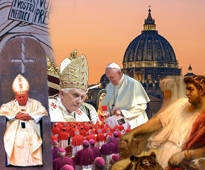
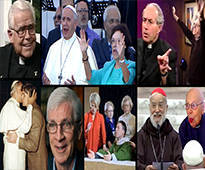
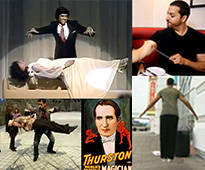


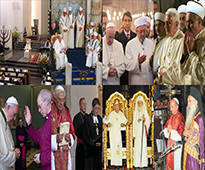


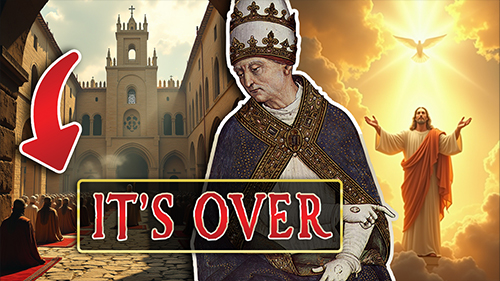 " />
" />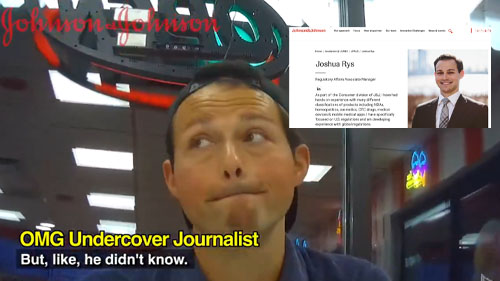 " />
" />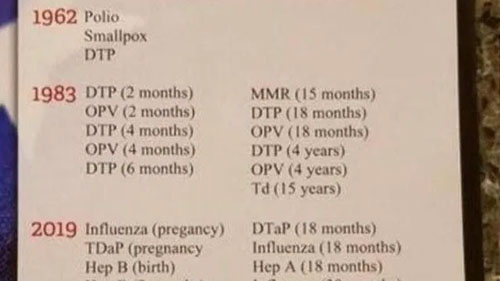 " />
" /> " />
" />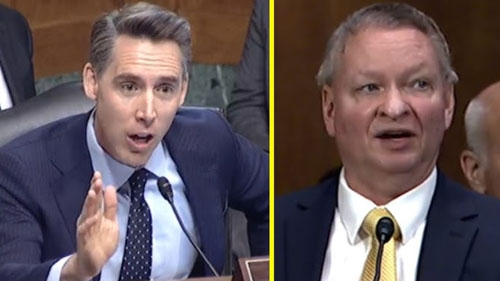 " />
" />




The Holy Office - Is It Infallible? (Geocentrism & Fr. Feeney)
Among those who claim to be traditional or conservative Catholics there is quite a bit of misinformation about what constitutes the teaching of the Catholic Church. This is true on the matter of the authority of the Holy Office and Roman Congregations. Many people have misconceptions on this issue.
For instance, one false traditionalist expressed a common error when he stated.
That’s wrong, as we will show in this video. Knowing the truth about this issue is relevant to recognizing the true teaching of the Catholic Church on salvation and rejecting modernist heresies.
BRIEF HISTORY AND STRUCTURE
The Holy Office is a Roman Congregation whose official establishment is frequently dated to 1542 under Pope Paul III, but its history as the Roman Inquisition goes back to the time of Innocent III. The Holy Office was set up as the supreme court, located at Rome, for trials concerning the faith.
Established in 1542 by Pope Paul III under the name of the Sacred Congregation of the Roman and Universal Inquisition or Holy Office, it originally consisted of six cardinals. It was reorganized and expanded by subsequent popes. In addition to the Holy Office, other Roman Congregations were established to carry out the governance of the pope.
Under the arrangement established by Pope Pius X, there were actually 11 Roman Congregations (although some would put the number at 13). The Holy Office was one Roman Congregation. Other Roman Congregations were the Congregation of the Sacraments, the Congregation of the Index, etc.
WHAT AUTHORITY DO DECISIONS OF THE HOLY OFFICE HOLD?
Statements issued by the Holy Office or another Roman Congregation can be approved by a pope either in common form or in specific form. When an act of a Roman Congregation (e.g. the Holy Office) is approved by a pope in common form, it does not take from the act of the congregation its nature and quality as the act of an inferior. Such an act of a Roman Congregation is not infallible, even when approved by a pope in common form.
As pre-Vatican II theologian Ludwig Ott stated:
As Patrick Toner, writing in the Catholic Encyclopedia in 1910, also stated:
But what about a statement of a Roman Congregation, such as the Holy Office, that is approved by a pope in specific form? Some would say that even then the act does not necessarily become infallible, but does so only when the pope, in approving it in specific form, makes it a solemn proclamation binding the whole Church. For instance, Fr. Benedetto Ojetti, writing in the Catholic Encyclopedia in 1912, states:
So, statements of Roman Congregations, when approved by a pope in the ordinary way, are not infallible.
Amleto Cicognani was a professor of canon law at the Pontifical Institute Of Canon Law in Rome. He also stated, in a work given an imprimatur in 1934:
We could cite others to the same effect. Note how different these statements are from the nonsense we heard from the false traditionalist: “Statements issued by congregations of the Church, with the approval of a true pope, are to be accepted with the authority of the Magisterium itself.”
MISUSING THE SYLLABUS OF ERRORS
Before we proceed, we should refute a certain objection that some raise on this issue. Some refer to the proposition condemned by Pope Pius IX, which states:
People misapply this quote. They pretend like it condemns the position that a Roman Congregation could make a mistake, or that it means that something a Roman Congregation decrees can never be rejected; but that’s false. That’s not what it is condemning. Rather, it condemns the position that Catholic teachers and authors are only bound to things pronounced by the Church as dogmas. That’s an error because, besides things formally proposed as dogmas, Catholic teachers and authors are bound to the canonizations of saints; dogmatic facts and conclusions flowing from dogmas; the universal and constant teaching of Catholic theologians (since that reflects the teaching of the ordinary and universal magisterium, to which one is also bound); disciplinary laws promulgated as binding upon all the members of the Church; the unanimous consent of Church fathers on a particular point of Scripture; etc. Thus, the obligation of obedience is not confined or limited to solemn dogmatic definitions.
Further, although statements of Roman Congregations approved in common form by a pope are not infallible, that doesn’t mean that Catholics are just permitted to dismiss them off the bat.
Hence, Pope Pius X in his Nov. 18, 1907, Motu Proprio Praestani Scripturae emphasized that there’s a duty to submit in conscience to the decisions of the Pontifical Biblical Commission.
People are bound to submit to the decision of a Roman Congregation approved by a pope, unless something of greater weight or a valid reason calls for a rejection of it. But a decree of a Roman Congregation pertaining to the faith that has been solemnly approved by a pope, and thus made absolutely binding on the whole Church, must not be rejected for any reason.
Here is pre-Vatican II theologian Fr. Joseph Pohle, writing with an imprimatur in 1911, explaining how respect and obedience is given to a decree of the Holy Office approved in common form unless it’s clear or highly probable that the congregation has made a mistake.
THE HOLY OFFICE CHANGES ITS POSITION ON THE STATUS OF GEOCENTRISM
One of the clearest examples of how the Holy Office and Roman Congregations are not in themselves infallible is the geocentrism case. In the 17th century St. Robert Bellarmine (doctor of the Church), many theologians of the Holy Office and various popes considered the denial of geocentrism to be heresy. This was reflected in acts of the Holy Office and Roman Congregations approved in common form.
Then in the 18th and 19th centuries, the position was reversed. With the approval of popes, Roman Congregations suspended the condemnation of heliocentric works and allowed their publication. In 1822 the Holy Office, with Pope Pius VII’s approval, threatened condemnations against those who would not allow the publication of heliocentric works.
This is from the Holy Office in 1822.
So here we have the Holy Office in 1822 threatening penalties against those who don’t give permission to publish works which teach that the sun is immobile. But the position of the Roman Congregations in the 17th century was the opposite.
In 1616 eleven theologians of the Holy Office, with the common form approval of Pope Paul V, condemned as heretical the position that the sun is immobile.
Likewise, in 1633 the Holy Office under Pope Urban VIII condemned as heretical the position that “the Sun is the center of the universe and does not move from east to west and that the Earth moves and is not the center of the universe” (Sentence Against Galileo).
This condemnation of the denial of geocentrism was approved by Pope Urban VIII, although not in an ex cathedra form. It was also circulated widely.
Then, in 1921, Pope Benedict XV, contradicting the 17th century position of the Holy Office, stated that the “earth on which we live may not be the center of the universe as at one time was thought.”
Pope Benedict XV promoted as possibly true the very position that the Holy Office a few centuries earlier condemned with the common form approval of popes. This article is not about whether geocentrism is true. We are, rather, pointing out that Roman Congregations and popes in their fallible capacity took two contrary positions on the theological status of geocentrism.
Thus, the Holy Office is not infallible in itself. This is important to know because modernism and heresy, especially on salvation, started to percolate in the teaching of theologians and members of the Roman Congregations before Vatican II. That’s one reason that Vatican II happened.
THE 1949 HOLY OFFICE ON PRAYING THE OUR FATHER WITH NON-CATHOLICS
We also find the trend toward modernism in the instruction of the Holy office on the ‘Ecumenical Movement’, issued on Dec. 20, 1949. That instruction declared it permissible for Catholics and non-Catholics to pray the Our Father together at meetings and conferences.
That’s another example of how the Holy Office is not the same thing as the Magisterium. The official teaching of the Magisterium is free from all error. Acts of the Holy Office and Roman Congregations are not. We bring these facts out because many so-called traditionalists have constructed a pseudo-magisterium that consists of selective statements from fallible theologians and other non-magisterial sources. They attempt to assign to them an authority or a protection or an infallibility that they don’t possess. In the process they deceive and corrupt the faith of various people.
THE CASE OF FR. LEONARD FEENEY & SUPREMA HAEC SACRA
These points are extremely relevant to the case of Fr. Leonard Feeney; for many people falsely claim that “the Church condemned Fr. Feeney’s teaching” in 1949. They are so wrong.
They are referring to the alleged Holy Office letter dated Aug. 8, 1949, called Suprema Haec Sacra. But what they don’t tell you or don’t emphasize is that this supposed Holy Office letter, which is filled with modernism and errors, was not approved in specific or solemn form by Pius XII. It was also not signed by Pius XII. It only purported to be a common form Holy Office act. But a common form Holy Office letter is not infallible and can be rejected if it contradicts something of greater weight, which Suprema Haec Sacra definitely does. This video is not about why Pius XII, who allowed modernism to grow in various ways, supposedly approved the letter in common form. It's about the Holy Office and Roman Congregations.
Even someone like Msgr. Joseph Clifford Fenton admitted that Suprema Haec Sacra was not infallible.
SUPREMA HAEC SACRA ALSO WASN'T EVEN AN OFFICIAL ACT - IT WAS TECHNICALLY PRIVATE
Furthermore, the alleged Holy Office letter Suprema Haec Sacra, dated Aug. 8, 1949, wasn’t even promulgated in the normal fashion. It was never published in the Acts of the Apostolic See, which is customary for such decrees. Canon 9 of the 1917 Code of Canon Law says that laws are published in the official commentary called the Acts of the Apostolic See (AAS - Acta Apostolicae Sedis), unless a different mode of promulgation has been prescribed. We don’t merely find disciplinary decrees published in the AAS but also encyclicals and things pertaining to doctrine. Since Suprema Haec Sacra wasn't even published in the AAS, and no other mode of publication was specified in the letter, it’s true to say that it was never officially published.
In fact, pre-Vatican II canonist Fr. Ignatius Szal (in a dissertation published with an imprimatur in 1948) described a May 26, 1916, response of the Holy Office on a different matter as “private” because it was not published in the Acts of the Apostolic See but rather in a diocesan newspaper. “The second reply [May 26, 1916] was a private response of the Holy Office to the Bishop of Linz. It was published in a diocesan newspaper, and not in the Acta Apostolicae Sedis.” (Fr. Ignatius Szal, The Communication of Catholics with Schismatics, Catholic University of America Press, 1948, pp. 156-157) The same applies to Suprema Haec Sacra.
But even if Suprema Haec Sacra had been published in the normal fashion (which it wasn't), that would not make it infallible or magisterial.
Instead of the Acts of the Apostolic See, it was published in The Pilot, the news organ for the Archdiocese of Boston. Indeed, when it was initially published in The Pilot in 1949, it wasn’t even published in full. It was only published in full in The Pilot three years later, in 1952. It’s really a piece of trash modernist document. In reality, it’s a pseudo-Holy Office letter. It also became the foundation for the modernist rejection of the dogma Outside There Is No Salvation. The entire purpose of the letter was to give cover to the modernists who wanted to silence and condemn Fr. Feeney for preaching that non-Catholics must be converted to Catholicism to be saved.
Suprema Haec Sacra
(Aug. 8, 1949)
That’s why at about the same time it was published in Boston, a new England paper ran a typical headline that stated:
VATICAN RULES
AGAINST HUB
DISSIDENTS
Holds No Salvation
Outside Church
Doctrine to be false
- Worchester Telegram, Sept.
2, 1949
That was the effect of the modernist, pseudo-Holy Office Letter Suprema Haec Sacra. It was written in response to the modernist heretic ‘Cardinal’ Richard Cushing, a man who called the dogma Outside The Church There Is No Salvation nonsense and became a B’Nai Brith man of the year. Fr. Feeney was having much success converting people by preaching the absolute necessity of the Catholic faith for salvation, just as true Catholics in our day who hold the same position have success converting people that far exceeds other groups. The heretic Richard Cushing silenced Feeney and put his group under interdict because they were preaching Catholic dogma and converting people. Cushing was upset that Fr. Feeney was boldly telling non-Catholics that they won’t be saved unless they convert to the Catholic Church, so he complained to Rome.
What Cushing received in response was the modernist letter he was looking for. Sadly, most of the priests in the years just before Vatican II had fallen into heresy on salvation. Vatican II didn’t happen overnight. Decades of errors and even heresies in fallible sources, especially on salvation, led to it. The modernist document Suprema Haec Sacra was the pre-Vatican II culmination of that process.
This video is not about the errors in Suprema Haec Sacra. It is about the Holy Office and Roman Congregations. We have covered the facts on this.
CONCLUSION
These facts demonstrate that when people run around and act like the irregular, common form supposed Holy Office letter Suprema Haec Sacra is a definitive act of the Magisterium, they are just deceiving people. They don’t understand the proper role or authority of the Holy Office or the distinction between it and the Magisterium and the Chair of St. Peter. Suprema Haec Sacra was a fallible letter written by modernists and it must be rejected because it contradicts the teaching of the Chair of St. Peter.
NOT INFALLIBLE BUT NECESSARILY SAFE?
In response to these facts about the fallibility of Roman congregations, some argue that although Holy Office decrees are not infallible, they are absolutely guaranteed in every case to be safe. Their claim is false and they have no magisterial support for it. It’s true that the Holy Office would sometimes declare a doctrine safe or unsafe; but if that act is fallible in itself there is no ultimate safety in what can be erroneous. It’s true that laws of the Catholic Church, which have been promulgated as binding upon all by the supreme authority of the Church, are necessarily safe; but this does not apply to fallible Holy Office acts. Indeed, if something can be mistaken, unsound and erroneous, as they admit, then it can contain error that is opposed to the faith. There’s no “absolute and guaranteed safety” in embracing error.
On this matter we had a brief exchange with the sedevacantist priest who was ordained by Donald Sanborn. The priest’s name is Damien. We asked him if he agrees with Donald Sanborn that souls can be saved in false religions.
He refused to answer the question. The idea that souls can be saved in false religions is of course a heresy that contradicts defined Catholic dogma. He wouldn’t answer the question because he’s sadly a heretic who holds the same position as Sanborn and similar priests. In our exchange, Damien admitted that decrees of the Holy Office are not infallible. “Not infallible, yes”, he wrote on June 5, 2019. He then argued, on the same day, that “there is no way you can go wrong” following them.
So, according to him, a Holy Office decree is not infallible (which means that it can contain error), but there’s “no way” you can be wrong following it. Of course, that is self-refuting nonsense. Such contradictory claims emanate from people who attempt to defend a false position and labor under a false understanding of Church teaching. What they are confusing is safety with a diminution of culpability. Someone who follows the error contained in a fallible act of a Roman Congregation or some other approved work, sincerely believing that it’s Catholic teaching, isn’t absolutely safe; but he or she could very well have diminished or eliminated culpability until it’s clear to the person, from some fact or a teaching of greater weight, that what he or she thought was the correct position is not. Those are the true principles about the Holy Office and Roman Congregations.
Sign up for our free e-mail list to see future vaticancatholic.com videos and articles.
Recent Content
^